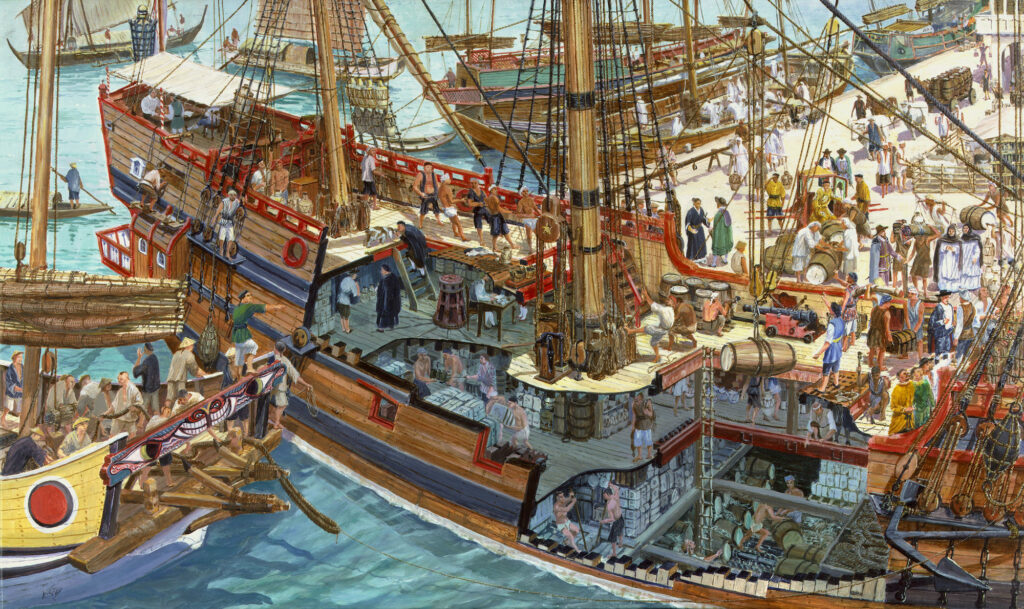Spanish in the Philippines is primarily spoken by Spanish Filipinos and is a dialect of standard Spanish native to the country. However, most Filipinos do not speak or understand Spanish, and the Filipino language is not closely related enough to Spanish for significant mutual comprehension.
The Philippines was under Spanish colonial rule for over 300 years, from the 16th century until 1898. During this period, Spanish had a strong influence on the country’s culture, religion, and language. However, with the arrival of American colonization in the early 20th century, English became the dominant language, replacing Spanish as the country’s official language.
Despite this, Spanish still has some presence in Filipino culture through surnames, religious practices, and historical remnants.
Spanish Influence In The Philippines
Spanish colonization in the Philippines played a significant role in shaping the country’s history and culture. The Spanish ruled the Philippines for over three centuries, from the 16th to the 19th century. During this time, several changes were observed, including in trade, cultural exchange, language, and religion.
The galleon trade with Acapulco, Mex., was prominent during Spanish colonization, which allowed Manila to establish its commercial dominance. This trade route facilitated the exchange of goods between Asia, Europe, and the Americas.
The Spanish influence also extended to language and religion. While the majority of Filipinos do not speak or understand Spanish today, the Spanish language had a profound impact on the development of the Filipino language. Additionally, Catholicism became the dominant religion in the Philippines due to Spanish missionaries’ efforts to convert the Filipino population.
Spanish Language In The Philippines
The development of Philippine Spanish can be explored through various aspects, including phonology and pronunciation, morphology and syntax, as well as vocabulary and loanwords.
| Phonology and Pronunciation |
| The phonology and pronunciation of Philippine Spanish differ from standard Spanish, with unique regional variations influenced by local languages. |
| Morphology and Syntax |
| Similar to phonology, the morphology and syntax of Philippine Spanish have been shaped by the mixing of Spanish with the local languages of the Philippines. |
| Vocabulary and Loanwords |
| The vocabulary of Philippine Spanish includes loanwords from indigenous Filipino languages, reflecting the cultural and linguistic assimilation over time. |
While the Spanish language had a significant impact on the Philippines during the Spanish colonial period, it is important to note that today, the majority of Filipinos do not speak or understand Spanish. Instead, the official language of the Philippines is Filipino, which has its roots in Tagalog.
Spanish Legacy In Filipino Culture
The Spanish legacy in Filipino culture is evident through the Spanish language, which is spoken mainly by Spanish Filipinos. Although most Filipinos do not speak or understand Spanish, the cultural characteristics they share with Latinos, such as last names, religion, and language, reflect the influence of Spanish colonialism.
Spanish-influenced Traditions And Festivals
The influence of Spanish colonization on Filipino culture is evident in various traditions and festivals. Events like the Sinulog Festival and the Ati-Atihan Festival showcase the melding of Spanish and indigenous Filipino elements, with vibrant parades, colorful costumes, and traditional dances. These celebrations not only commemorate historical events but also serve as a way to honor Filipino religious devotion.
Spanish Influence On Philippine Cuisine
The Spanish introduced various ingredients and cooking methods to the Philippines, significantly shaping Filipino cuisine. Traditional dishes such as adobo, sinigang, and lechon have Spanish origins. The fusion of Spanish and indigenous flavors creates a unique culinary experience that reflects the country’s rich history.
Spanish-inspired Architecture And Landmarks
| Spanish-inspired Architecture | Landmarks |
|---|---|
| The Intramuros in Manila is a prime example of Spanish colonial architecture, featuring ancient walls, historic buildings, and beautiful churches. | The San Agustin Church, declared a UNESCO World Heritage Site, showcases intricate Spanish Baroque architecture and is considered one of the oldest stone churches in the Philippines. |
| The Bahay na Bato (Filipino-Spanish ancestral house) is another architectural gem that highlights the assimilation of Spanish and Filipino design, characterized by elevated wooden structures. | Fort Santiago, a fortress built during the Spanish colonial period, serves as a significant historical landmark and provides visitors with insights into the country’s past. |
The Spanish legacy intertwined with Filipino culture is visible in various aspects, from traditions and cuisine to architecture and landmarks. It is a testament to the enduring influence of Spain on the Philippines.

Credit: www.alamy.com
Frequently Asked Questions For Spanish In The Philippines
Are Filipinos Hispanic Or Latino?
No, Filipinos are neither Hispanic nor Latino. While they share some cultural characteristics with Latinos due to Spanish colonialism, they are categorized as Asian by the U. S. Census. The Filipino language is not similar enough to Spanish for significant mutual understanding.
How Long Were The Spanish In The Philippines?
The Spanish were in the Philippines for approximately 333 years.
Do A Lot Of Filipinos Speak Spanish?
No, most Filipinos do not speak Spanish. The Filipino language is not closely related to Spanish.
Why Did The Spanish Colonize The Philippines?
The Spanish colonized the Philippines to gain control of the spice trade, establish connections with China and Japan for missionary efforts, and convert Filipinos to Christianity.
Conclusion
While Spanish colonization in the Philippines left a lasting impact on the country’s culture and history, the Spanish language itself has not remained widely spoken among Filipinos today. The Filipino language is distinct from Spanish, with only a Spanish-based creole called Chavacano being recognized as a non-Austronesian Spanish-Asiatic language indigenous to the Philippines.
However, the influence of Spanish colonialism can still be seen in aspects such as last names, religion, and cultural characteristics shared with Latinos. Overall, the Spanish language in the Philippines is a part of its rich heritage but is not commonly spoken in everyday life.

